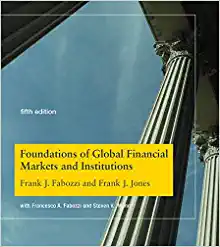

I am stuck on the problems with the red font. I'm not sure how these graphs should look or how to explain the conclusion from the abatement.
(c) In at least 200 total words, draw a conclusion on why the uniform standard will not meet the cost-effectiveness criterion. For rm 1, marginal abatement cost is 30 and for rm 2 it is 105. The difference in the marginal abatement costs shows that the cost-effective criterion is not met. For both rms to meet the cost effective criterion there should be uniformity in the marginal abatement costs. 2. (a) Determine how the abatement levels should be reallocated across the two rms to minimize costs. The abetrnent requirement per rm should be allocated equally to obtain cost effectiveness. The total of the abatement cost (rm 1 and rm 2) should be equal to 40 units. The following is a calculation of marginal abatement costs. Solving equation, 10+ 0.5 A=5 +2.5 A 5 = 2.0A 2.5= A If A2 equals to 2.5 then A1 equals to 37.5(402.5) units. Thus, to obtain cost effectiveness rm 1 should be allocated 37.5 units and rm 2 should be allocated 2.5 units. The marginal abatement cost can be checked by using these units. (Marginal Abatement Cost for Firm 1) = 10 + 0.5 ( 37. 5) =10 + 18.75 =28.75 (Marginal Abatement Cost for Firm 2) = 5 + 2.5 ( 2.5) = 5 + 18.75 = 28.752 Now, the marginal abatement cost for rm 1 and rm 2 is equal. (b) Show your results in a separate graph that is properly labeled. (c) In at least 200 total words, draw a conclusion on how the abatement levels should be reallocated across the two rms to minimize costs. Problem B Assume that two power plants, Firm 1 and Firm 2, release sulfur dioxide (802) in Atlanta that exceeds the emissions standard. To meet the standard, 40 units of $02 must be abated in total. The two rms face the following abatement costs: MAC] (Marginal Abatement Cost for Firm 1) = 10 + 0.5Al MACZ (Marginal Abatement Cost for Firm 2) = 5+ 2.5A2 The costs are measured in thousands of dollars. With your knowledge of the class discussion on Government Approach to Market Failure (pages 90 to 95 in Chapter 4 in Callan and Thomas on Conventional Solutions to Environmental Problems: The Command-andControl Approach in the 6th Edition), 1. (a) Prove that a uniform standard will not meet the cost- eectiveness criterion. A uniform standard means that each rm must abate the same amount, which in this case would be 20 units of 802 each. Using this value, we nd each rm's marginal statement costs. The results are MACl = 10 + 0.5(20) = $20 thousand, and MAC 2 = 5 + 2.5(20) = $55 thousand. Since the MACS are not equal, we know the cost-effectiveness criterion is not met. (b) Show your results in a graph that is properly labelled. (c) In at least 200 total words, draw a conclusion on why the uniform standard will not meet the cost-effectiveness criterion. For firm 1, marginal abatement cost is 30 and for firm 2 it is 105. The difference in the marginal abatement costs shows that the costeffective criterion is not met. For both rms to meet the cost effective criterion there should be uniformity in the marginal abatement costs. 2. (a) Determine how the abatement levels should be reallocated across the two firms to minimize costs. The abetrnent requirement per rm should be allocated equally to obtain cost effectiveness. The total of the abatement cost (rm 1 and rm 2) should be equal to 40 units. The following is a calculation of marginal abatement costs. Solving equation, 10+0.5 A=5 +2.5 A 5 = 2.0A 2.5= A If A2 equals to 2.5 then A1 equals to 37.5(402.5) units. Thus, to obtain cost effectiveness rm 1 should be allocated 37.5 units and rm 2 should be allocated 2.5 units. The marginal abatement cost can be checked by using these units. (Marginal Abatement Cost for Firm 1) = 10 + 0.5 ( 37. 5) W










